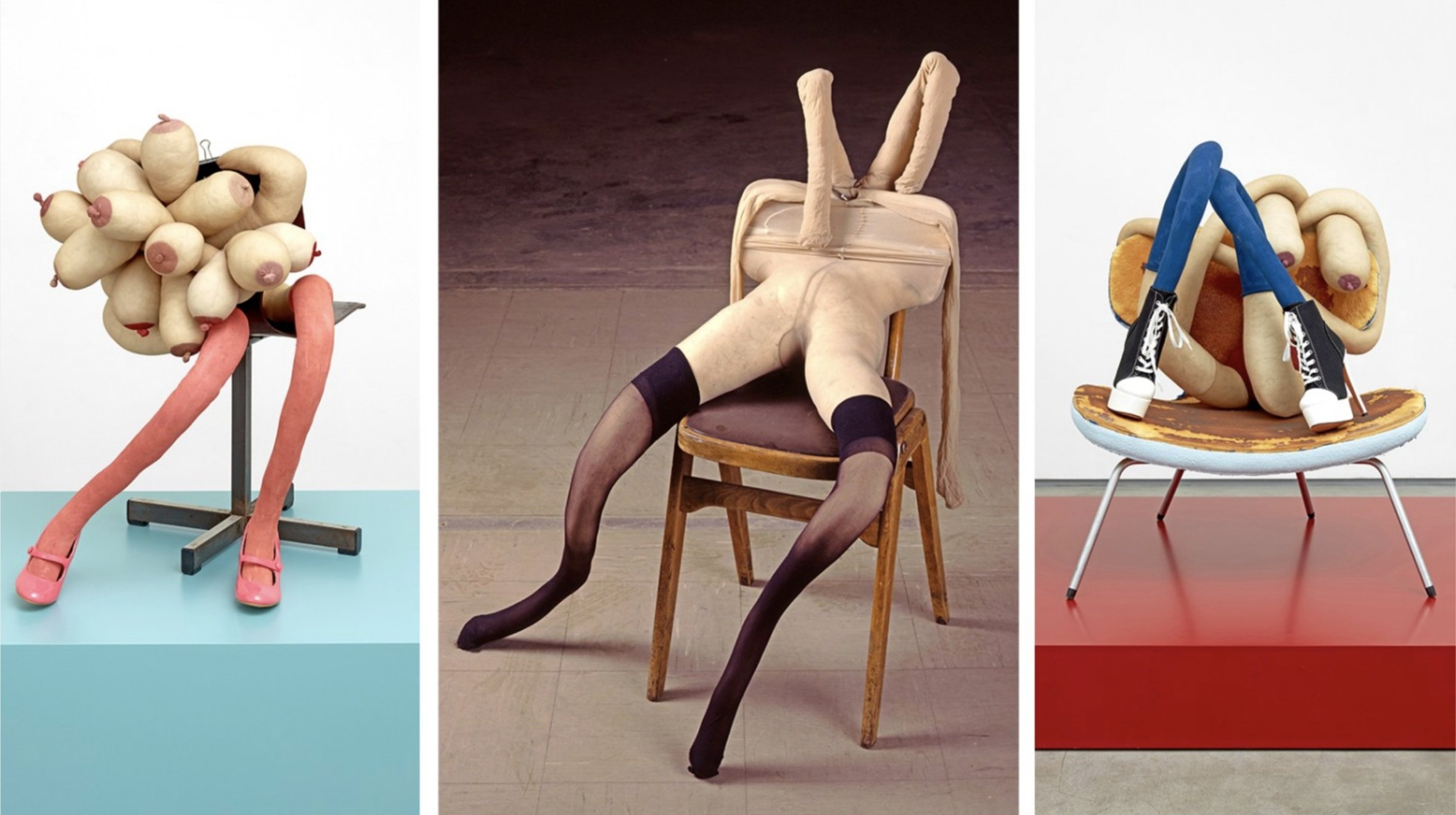Sarah Lucas: ‘Everything Is Language’
Sarah Lucas. From left: Sugar, 2020; Bunny, 1997; and Cool Chick Baby, 2020
I recently visited a retrospective of the work of artist Sarah Lucas. (‘Happy Gas’ is at Tate Britain, London until 14 January.)
'My maxim would be: Do what you like… It’s not always easy to know what that is though.'
Lucas emerged as one of the key players in the Young British Art scene of the 1990s. This movement had a lot in common with advertising – the good and the bad. It was bold, immediate, funny and accessible. But it could also be vulgar, simplistic and shallow.
Lucas’ current show provides an opportunity to step back and take a broader look at her work over the Britart period and the decades that followed.
'I don’t tend to preach in my work. It’s more about having a look around at what’s going on…Very surprising when you open your eyes.’
She has spent her career considering consistent themes: sex, swearing and smoking; food and toilets; the expressiveness of ordinary things.
Sarah Lucas: Self Portrait With Fried Eggs, 1996
In the exhibition there are blown up photos of crude tabloid stories; of Lucas eating a banana and holding a huge salmon. There are naked body-casts and erect penises; a masturbating mechanism and a pair of chicken knickers. There’s also a big concrete sandwich. And each piece is given a wry, playful title.
Lucas clearly has had a fascination with smoking and mortality. A crash helmet made of fags sits on a charred armchair. Cigarettes poke out of navels and backsides. They decorate a burnt-out car, broken in two.
‘When I first started using cigarettes in art, it was because I was wondering why people are self-destructive. But it’s often destructive things that make us feel most alive.’
© Sarah Lucas, Courtesy Sadie Coles HQ, London. Photo: © Nick Turpin
Over the years Lucas has returned again and again to her chair sculptures - which she calls her ‘Bunnies.’ Stuffing tights with shredded newspaper, kapok, cotton or wool, she created faceless female figures with writhing limbs; with multiple, saggy and lightbulb breasts. She gave them daft names - like Fat Doris, Honey Pie and Zen Bomb - and arranged them in platform shoes and kinky boots, perching on armchairs, side chairs and office chairs. They are insolent, saucy, suggestive. And seen together, they have their own distinct characters.
‘The purpose of chairs (in the world) is to accommodate the human body sitting. They can be turned to other purposes. Generally as a support for an action or object. Changing light bulbs. Propping open a door. Posing. Sex.’
Lucas encourages us to interrogate objects for their meaning. Things derive associations and resonances from their various functionalities; from their use and abuse; from their physical similarities to other forms; from their constituent materials, their ownership, history and location. Everything means something.
‘Everything is language, including objects. There’s an infinity of ‘stuff.’ How to invest any of it with meaning?’
Sarah Lucas: Is Suicide Genetic?
helmet, cigarettes, burnt-chair, cigarette packets. 1996
Of course, Lucas is coarse. You need a robust constitution to navigate her work. Nonetheless I left the exhibition reflecting on the artist’s big themes.
For all our complexity and sophistication, we are united in our basic instincts: our carnal drives and emotional impulses. These appetites can be disturbing and contradictory, uplifting and amusing; and they can often surprise.
‘It’s a paradox that happiness reminds us of sadness, and that a sad story can be uplifting, or that something magical can come about through something mundane. I suppose that, when I’m making things, I’m looking for some kind of transcendence from everyday stuff into something surprising.’
'I'd work very hard, but I'm lazy.
I can't take the pressure and it's starting to show.
In my heart you know that it pains me,
A life of leisure is no life you know.
Waking up and getting up has never been easy,
Oh, I think you should know.
Waking up and getting up has never been easy,
Oh, I think you should know.
Oh, I think you should go.
Make a cup of tea, and put a record on.’
Elastica, ‘Waking Up’ (B Duffy / D Greenfield / H Cornwell / J J Burnel / J Frischmann)
No. 447



